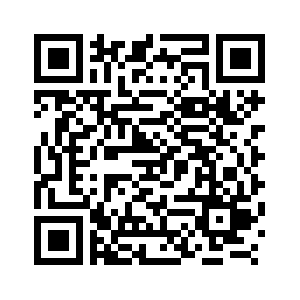by Xinhua writer Wang Zhuolun
JERUSALEM, May 18 (Xinhua) -- How do 16 electric violinists playing the same repertoire pinpoint the exact moment of synchrony without hearing each other's performance? In the central Israeli city of Ramat Gan, a special museum on the campus of Bar-Ilan University, which aims to transform unfathomable scientific research projects from the labs into unique artistic exhibits, provides creative answers.
"The scientist adopts a methodology which was used in nanolaser research to measure synchronization between human beings. In an article published by the scientific journal Nature, you can see the graphs when they are in synchronization and when they're not," Tal Yizrael, curator and co-founder of the museum, told Xinhua ahead of International Museum Day, which falls on Thursday.
Located at the Institute of Nanotechnology and Advanced Materials of the university, the Fetter Nanoscience and Art Museum was unveiled in 2021. The 10 exhibits, displayed inside and outside the complex of the institute, epitomize many cutting-edge scientific research achievements of the researchers from the university.
In the museum, one will feel that science is intertwined with art and art is a way to express science. Entering the ground floor of the hall, the first exhibit that comes into sight is a large wooden arch called "Arabesque," inspired by nanocrystal structures researched in a light matters lab.
Yizrael explained that after the idea of establishing the museum came to her mind a few years ago, 40 scientists and 40 artists were selected in the "match-making" process, and later some groups of collaboration were gradually created.
The artists were invited to visit the labs, where they were able to observe corresponding experiments and have in-depth discussions with researchers before incorporating their creative ideas into scientific breakthroughs.
"The artists and scientists cooperated for several years and some have continued to work on projects until now. The museum is a platform for collaboration, and in the future we hope it will also be a hub hosting international exhibitions," said Yizrael.
"Actually, arts and science lived together for many years, and it's only modernism that separated them. Each time when artists and scientists met, they found out that they had a lot in common -- both of their work require creativity, sometimes the same practice, trial and error or long time of research," she noted.
Almost all of the research related to the exhibits in the museum are interdisciplinary, involving nanoscience, life sciences, engineering and chemistry, according to Elana Oberlander, foreign press spokeswoman of the university. Meanwhile, some projects serve to explore and demonstrate human behavior through scientific and technological means and hence are also related to psychology and sociology, such as the exhibit about synchronization among violin players.
A paper painting made of crystallized Dead Sea salt materials stabilized by nanotechnology, a mobile water droplet wrapped in hydrophobic coatings of polymer nanoparticles passing through mechanical equipment, winding rubbers showcasing the application of nanometer structure in observing the recovery process of damaged neurons...Though the number of exhibits is not large, each piece is the result of long-time joint efforts of artists and scientists. Alongside each exhibit, a video in English, Hebrew and Arabic is played to explain the complex science behind it.
Eyal Malka, a graduate student of the Department of Chemistry who participated in the exhibit named "Flooding," told Xinhua that the creative world and innovative ideas are very helpful for scientists to reach unconventional solutions. "I think the fields of science and art are interconnected very beautifully here, and artistic exhibits provide a very vivid and convenient way to show the general public scientific solutions."
"I brought my family and my parents to the museum and they were very interested. Most people may not have background knowledge about nanoscience, but when they visit here they will definitely be fascinated," he added. Enditem
(Nick Kolyohin also contributed to the story.)



